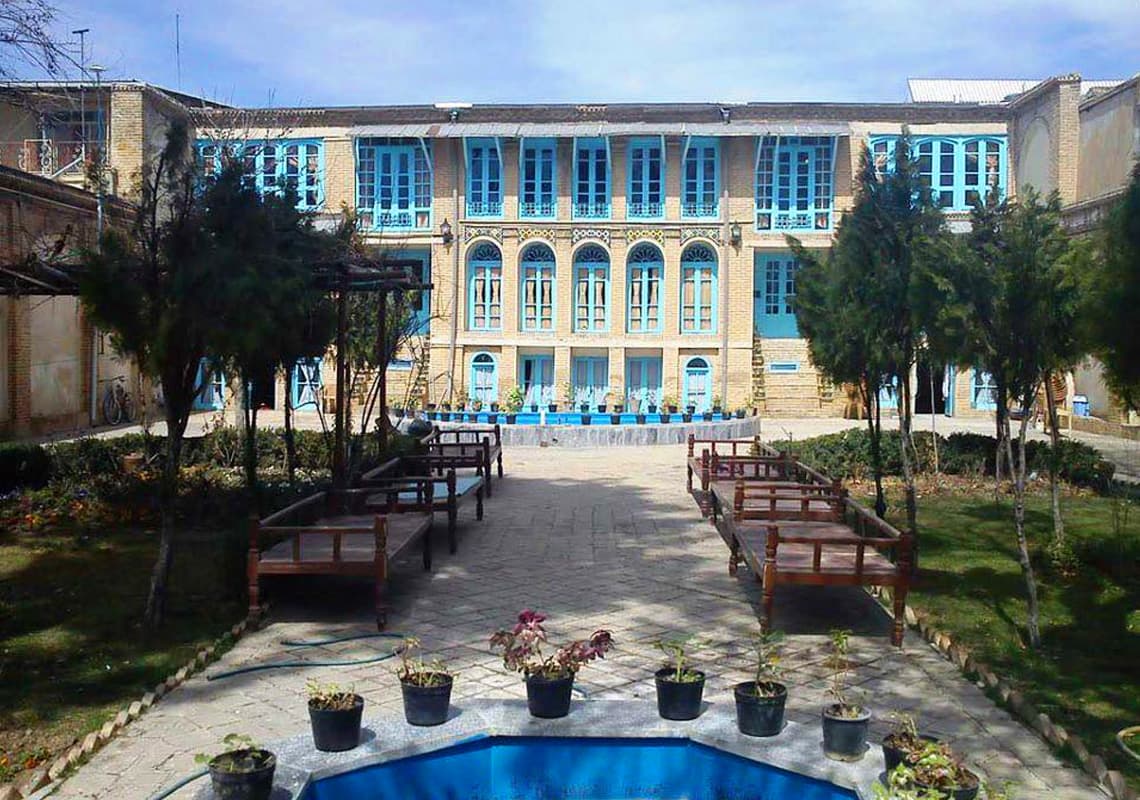Boroujerd city is a manifestation of Iranian-Islamic architecture due to its old history and existence of historical monuments, which has not been introduced to its proper level so far. The historical context of Boroujerd is said to be one of the central areas of Boroujerd that form the old core of this city and Boroujerd's historical houses are located in this context.
In recent years, the study and protection of valuable structures of this part has caught the attention of related organizations. Most of the artifacts in this area date back to the Qajar era and before that. Some of its mosques and aristocratic houses have great tourist and historical value potentials. The historical context of Boroujerd includes a complex of 280 hectares of the central and eastern areas of the city, which today are mostly located in the streets of Jafari, Safa, Shohada and Bahr al-Ulum. Unfortunately you will not be able to have a booking in a luxury hotel in Iran at this part of this city, however, tourist old local guesthouses in Iran can be an option for you. If you are to stay in Isfahan, you can book in for a luxury traditional hotel in Isfahan like kianpour bputique hotel in Isfahan.
This texture roughly includes the approximate size of the city of Boroujerd that was mapped in 1850. It was defined by a map prepared by the Russian army that year. The historical context of Boroujerd has four neighborhoods or alleys: Dodangeh, Sufis, Razan. Dudangeh is the main neighborhood and commercial and economic center of this context.
Significant historical monuments such as Jafar Imamzadeh, Boroujerd Grand Mosque and Soltani Mosque are located in this context, some of which are more than a thousand years old.
The old bazaar of Boroujerd and several historical caravanserais are also located in this area. More than 50 historic houses are located in this texture, some of which have interesting architecture. Birjandi House, Tabatabai House and Eftekhar Al-Islam House are among this group.
According to some available statistics, there are more than 50 old and valuable houses in Boroujerd city, only a few of which are registered in the list of national monuments and the rest are in the possession of private owners.
Haj Agha Kamaluddin Nabavi Tabatabai's house is one of the most luxurious historical houses in Boroujerd, which was purchased by the Cultural Heritage Organization in 2005 and is now a museum of constitutional documents.
According to the heirs of the late Haj Agha Kamal, this valuable house was purchased by Haj Mirza Abu Torab, one of the descendants of Ayatollah Seyyed Mohammad Tabatabai (grandfather of Sadat Tabatabai Boroujerd, buried in Sameti Park) for the son of the late Haj Ishaq (Agha Kamal). This old house has a relatively large yard (compared to the size of the building) and has special conditions, including a large yard decorated with brick facades and tiles and also it has three floors in the building.
The entrance to the monument, which has a large wooden door and a beautiful brick entrance, leads to the main courtyard through a long corridor at the end of which there is a simple door called ‘Harzehpoosh’. Introversion and respect for the privacy of the family is one of the unique features of the original Iranian architecture, and this building is one of the prominent examples of this issue. To access the interior of the building, we pass through a corridor to reach its heartwarming courtyard. Around the courtyard, except for the facade of the main part, it has been formed in the form of an arch with various brickwork and tiles.
This traditional house in Iran has three floors, the inner courtyard is accessible by the high entrance to the courtyard. All of floors are symmetrical, which are distinguished by the use of five-door elements and simple doors and windows.
The first floor of the mansion has two winter naves with the roof of the cradle arch and a door in the middle and a large pedestal at the end of the five-door room. Either side of the five-door brick staircase is symmetrical to the entrance of the main floors of the building. The middle floor (second) has a five-door hall above the lower nave, at the end of which is a hall with beautiful artistic doors, ceilings and prefabricated heaters painted with great effect. On the west and east sides of the hall and staircase there is a large room with several tombs (closets). The last floor, which is called the royal residence, has shorter ceilings than the lower floor, and in terms of form and space, like the second floor, with a difference; that its decorations have been significantly reduced.
At the end of the south side of the courtyard just below the basement is an old four-section multipurpose arched refrigerator-room with sharp eyelids that used to separate several layers of ice from the pool in the winter and gradually flow through a hole in it. It was used in the warm seasons. At present, this valuable historical house in Iran is owned by Boroujerd Municipality and will be used as a museum.







